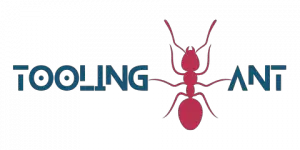Google Docs is a powerful and convenient tool for collaboration and productivity, and it has only become more versatile as it has grown over the years.
But what many people don’t know is that Google Docs uses a technology called WebSockets to provide real-time updates and collaboration features.
In this comprehensive guide, we will explore what WebSockets is, how Google Docs uses it, and the benefits of using their Realtime API.
We will also discuss Operational Transform and how the Realtime API works.
So join us as we delve into the inner workings of Google Docs and explore the technology that helps make it so useful.
Short Answer
No, Google Docs does not use websockets.
Websockets are a protocol used to establish a bi-directional connection between a client and server, while Google Docs primarily uses HTTP and HTTPS protocols to communicate data between a client and server.
Google Docs also utilizes AJAX (Asynchronous JavaScript and XML) to create interactive web applications, which can facilitate real-time data exchange between a client and server.
What is Google Docs?
Google Docs is a free online word processor, spreadsheet, presentation, and form creation tool that is available for use with a Google account.
It allows users to create and edit documents, spreadsheets, and presentations in the cloud, allowing them to access the files from any device with an Internet connection.
Google Docs also offers powerful collaboration features, such as the ability to view and comment on documents in real-time, as well as create and share documents with others.
The service also offers a range of advanced features, such as the ability to embed images, videos, and charts in documents, as well as a range of formatting options and custom templates.
Google Docs also offers powerful search capabilities, allowing users to quickly find documents and content within their account.
What is WebSockets?
WebSockets is a web communication protocol that enables two-way communication between a web browser and a web server.
It is a network protocol that provides full-duplex communication over a single TCP connection.
It allows for real-time communication between a web browser and a server, allowing for real-time data exchange and instant messaging applications.
WebSockets are a powerful tool for creating dynamic web applications, as they allow for communication between the browser and server without having to make continual requests.
WebSockets are supported by all modern web browsers and provide a more secure and efficient way of transferring data over the internet.
WebSockets are based on a technology called the WebSocket Protocol, which is an open standard for networking applications.
The WebSocket Protocol is an application layer protocol that enables full-duplex communication across the web.
It is a bi-directional protocol that enables data exchange between the web browser and the server.
WebSockets are used for a variety of applications, from streaming media to collaborative applications.
Does Google Docs Use WebSockets?
No, Google Docs does not use websockets.
Instead, it uses an API called the Realtime API.
This API is powered by Googles Firebase technology and is built on top of a real-time synchronization protocol called Operational Transform.
This protocol allows for the efficient synchronization of data between clients, allowing for the same real-time collaboration capabilities as websockets.
The Realtime API is designed to allow developers to create applications that allow multiple users to edit the same document simultaneously and share documents with others.
This API makes it possible to replicate the same real-time collaboration capabilities found in Google Docs without having to use websockets.
The Realtime API also allows applications to synchronize changes across multiple clients, as well as broadcast changes to multiple clients at once.
This is essential for applications that allow multiple people to edit the same document simultaneously.
The Realtime API is built on top of an Operational Transform (OT) protocol.
OT is a highly efficient synchronization protocol that allows for the efficient synchronization of data between clients.
This protocol allows for the same real-time collaboration capabilities as websockets, but without the need for additional hardware or software.
In summary, Google Docs does not use websockets, but it does use an API that allows developers to access the same real-time collaboration tools as Google Docs.
This API, called the Realtime API, is powered by Googles Firebase technology and is built on top of a real-time synchronization protocol called Operational Transform.
This protocol allows for the efficient synchronization of data between clients, allowing for the same real-time collaboration capabilities as websockets.
What is the Realtime API?
The Realtime API is a powerful tool offered by Google that enables developers to create applications with real-time collaboration capabilities.
Powered by Googles Firebase technology, the API enables developers to create applications that allow multiple users to edit the same document simultaneously and share documents with others.
The API is built on top of a real-time synchronization protocol called Operational Transform (OT).
OT is a data synchronization protocol that allows for efficient synchronization of data between clients.
This allows for the same real-time collaboration capabilities as websockets.
The Realtime API also provides an extensible document model that allows developers to store data in a structured but flexible way.
This document model is based on a JSON-like data structure, and allows developers to store and query documents in a similar way to a database.
Additionally, the API comes with a wide range of features, including conflict resolution, real-time synchronization, presence detection, and more.
Overall, the Realtime API is an incredibly powerful tool that allows developers to create applications with real-time collaboration capabilities that rival those of websockets.
By taking advantage of the APIs features, developers can create powerful applications that allow users to collaborate in real-time on documents and other data.
What is Operational Transform?
Operational Transform (OT) is a real-time synchronization protocol designed to enable efficient collaboration between multiple users who may be editing the same document at the same time.
It is the protocol that powers the Realtime API which is used by Google Docs to enable its real-time collaboration capabilities.
It is an algorithm that ensures that changes made by different users are accurately and consistently replicated across all connected clients.
OT works by transforming each edit into an operation that can be applied to the original document, and then sending this operation to all connected clients.
It then compares the operations of each connected client, and resolves conflicts if necessary.
This ensures that all connected clients have the same version of the document, even if they are making changes at the same time.
OT is a powerful protocol that allows for efficient collaboration between multiple users, without the need for a websocket connection.
It allows for rapid and accurate synchronization of data between multiple clients, making real-time collaboration possible.
How Does the Realtime API Work?
The Google Realtime API works by providing developers with a platform to build applications that can support real-time collaboration.
This can include editing documents simultaneously, sharing documents with others, and more.
The API is powered by the Firebase technology and is based on a real-time synchronization protocol called Operational Transform (OT).
This protocol ensures that data is efficiently synchronized between clients, allowing for the same real-time collaboration capabilities as websockets.
The Realtime API works by establishing a connection between two or more clients.
When two or more clients are connected, they are able to send messages to each other and receive updates on changes to documents.
OT is the protocol that manages the communication between clients.
It is responsible for ensuring that all changes are sent to the other clients in the correct order and that no data is lost in transit.
The Realtime API also provides a range of features that allow developers to customize their applications.
For example, developers can use the API to configure permissions for document access, as well as set up automated notifications for when changes have been made to documents.
Additionally, developers can enable offline access so that documents can still be accessed and edited even when the connection has been lost.
Overall, the Realtime API provides a powerful platform for developers to build applications that enable real-time collaboration.
By utilizing the Operational Transform protocol and other features, developers can ensure that documents are accurately synchronized between clients and that users are able to access and edit documents even when they are offline.
Benefits of Using the Realtime API
The Realtime API provides developers with a range of benefits when building applications that require real-time collaboration.
Most notably, it offers the same real-time collaboration capabilities as websockets, without the need for developers to implement and maintain their own websockets server.
This eliminates the need to develop and maintain a separate system for real-time collaboration, allowing developers to focus on the development of their application.
In addition to eliminating the need for a separate websockets server, the Realtime API also offers a number of additional benefits.
For example, the API is built on top of the Operational Transform protocol, which allows for efficient synchronization of data between clients in real-time.
This allows for seamless collaboration, as changes made by one user are instantly reflected in the document for all other users.
The Realtime API also allows for the easy sharing of documents between users.
Developers can easily create shareable links that grant access to the document to anyone who has the link.
This makes collaboration even easier, as users who have the link can immediately start editing the document in real-time, without any additional setup.
Finally, the Realtime API is powered by Googles Firebase technology, which allows developers to access a range of additional features such as analytics and user authentication.
This can provide developers with valuable insights in to how their application is being used, as well as the ability to easily authenticate and authorize users.
Overall, the Realtime API offers a number of benefits for developers looking to create applications that require real-time collaboration.
By eliminating the need for a separate websockets server and providing access to additional features such as analytics and user authentication, the API enables developers to create powerful and engaging applications that can be easily shared and collaborated on in real-time.
Final Thoughts
Google Docs does not use websockets, but it does use an API that allows developers to access the same real-time collaboration tools as Google Docs.
The Realtime API, powered by Google’s Firebase technology, is built on top of the Operational Transform synchronization protocol.
This protocol allows for the efficient synchronization of data between clients, allowing for the same real-time collaboration capabilities as websockets.
With the Realtime API, developers can create applications that enable multiple users to edit the same document simultaneously and share documents with others.
By understanding how the Realtime API works, developers can create applications that provide collaborative editing capabilities as powerful as Google Docs.

